The Rise n' Rise of the Regime Renovators™️
Episode Two: A Friend in Need May be the Enemy in Deed
🗣👉 ‘None of us want to think the worst of our leaders. But we should…Sometimes a sociopath will slip through the cracks. And sometimes those sociopaths become…the President of the United States.’ — John Kiriakou, CIA Whistleblower/
🗣👉 ‘The US empire has always prioritized the expansion of its own power over the freedom and rights of others, using military, economic, and political interference to impose its will on other nations.’ — Chris Hedges, Journalist, Author.
🗣👉 ‘[America] is no longer a republic, but an oligarchy run by corporate interests, and these interests benefit from the interference in the affairs of other nations.’ — Gore Vidal.
🗣👉 ‘It may be dangerous to be America's enemy, but to be [our] friend [can be] fatal’. — Attr. Henry Kissinger
Introduction: By and large, the long-standing Australian-U.S. alliance is considered by the majority of political, policy, and media elites on both sides of the Pacific Pond to be mutually beneficial, essential, even sacrosanct. But behind it, like many nations with economic, strategic and/or military ties to the Empire du jour, there’s a downside, one rarely acknowledged—and when it is, often rejected—in public discourse. This alliance—buttressed in 2021 by the AUKUS pact* which itself has invited even more criticism of our increasing subservience in this always one-sided partnership—is ever more fraught with existential danger for our nation. (*See here for more on AUKUS.)
Moreover, the irony inherent in such a compact should not be lost on anyone. These dangers are exacerbated in no small measure by the ‘full spectrum dominance” the U.S. continues to exert on the world stage. This is exemplified by its repeat offender interference in the affairs of other nations, and insofar as we’re concerned, its stance toward Russia and Iran, and again in particular, our largest trading partner China.
Per the central theme of this series, perhaps the least known ‘beneficiary’ of America’s well-documented regime renovation gambits was The Land Down Under. Along with questioning the presumed benefits of the alliance, Australian writer Greg Maybury unveils some of its hidden history, one which short of the US curbing its enthusiasm for aggressive great power projection, is sure to be counterproductive not just for Australia, but the rest of the world.
This then represents the second instalment in a series exploring in whatever form it takes, the history and impact of America’s interference in the affairs of other nations. Along with reminding those who may have memory holed it or not fully appreciated the implications, this project aims to bring this narrative front of mind with folks who are just beginning to grapple with the reality that all is not right with the world. And in so doing, [then] expose the role of the Anglo-American-Zionist establishment (of which Australia as a member of the “Five Eyes” intelligence/security apparatus is a key part) in creating and fomenting that milieu of global uncertainty and instability. — GM
Reading Time: 35-40 mins.
See here👉for Episode One: The Rise n' Rise of the Regime Renovators™️ — Another Splendid Little Coup (Now and Then)
— Down Under n’ Over the Top
Per the introduction, in setting out my stall I was unable to think of a better opening gambit than by highlighting a little known conspiracy theory, one which if it ever proves to be true, will doubtless rock the foundations of the Australian-US relationship to its core and beyond.
This theory concerns the “mysterious disappearance” in December 1967 of our then sitting Prime Minister Harold Holt whilst swimming at remote Cheviot Beach on the south coast of Victoria. His body was never recovered; his death ruled a ‘misadventure’ of sorts. To be sure it’s not everyday a country’s leader disappears off the face the earth, and few nations can boast of any similar event in their history. We’ll return to this little known slice of history shortly.
But before proceeding, readers might bear in mind a few key points, this in order to make the 'medicine' go down easier. The first is the ‘too-numerous-to-mention’ “conspiracy theories” that for a long time were deemed too outlandish or ‘over-the-top’ to be taken seriously—and whose advocates have been mercilessly ridiculed to within an inch of their reputations (and beyond) by assorted debunkers for so doing—yet which have since proven to be entirely true.
AUTHOR NOTE: This theme is explored in depth in my series on conspiracy theories, the first episodes of which can be found here, here, and here. More will follow. Suffice to say, it’s a deep dive. Not recommended for those with time management issues, short attention spans, asthma or other respiratory pathologies.😉
Such realities are particularly apposite when we examine the clandestine spook-shuffling shenanigans of the Central Intelligence Agency (the CIA, aka “The Company”). This organisation ‘boasts’ of having played ‘host’ to more than its fair share of real conspiracies, all once deemed ‘loony-toon’ ludicrous, yet whose veracity is now all but a matter of public record.
Of special relevance to our narrative herein are the CIA’s myriad decade-spanning operations and projects whose primary objective was relieving avec extreme prejudice foreign leaders of the burdens of power, if not of life itself. Anyone not au fait with the CIA’s performance record in this respect can clue themselves up with the bizarre yet always entertaining shenanigans of Operation Mongoose, perhaps its most infamous gambit.
And this is without factoring in its oft-cited—well documented, and irrefutable—hand in the assassination of POTUS Number 35 John F Kennedy (aka JFK) in 1963. The dogged refusal of successive administrations 60 years on to force the release of the remaining JFK Files in the CIA’s Memory Hole is all the evidence one needs to underscore this reality. (Considering their own later fates, that JFK and his Attorney-General brother Robert were the ones that gave the nod to the CIA to set the “Mongoose” loose as it were, only adds to the deep layers of irony which attend the backstory herein. For another time.)
Yet, despite what the conspiracy theory debunkers might think, given their own shabby track record in (knowingly or unknowingly), getting it wrong, positing such theories, albeit with suitable clarifications and caveats, is not just now more acceptable; it becomes de rigueur when investigating and analysing possible high-level corporate, institutional and/or government malfeasance and criminality. In fact in the interests of reaching a more accurate, truthful account of our history, investigative logic alone demands that little within the realms of probability and possibility should be left off the table. Understandably, this notion is not one warmly embraced by the conspirators and plotters themselves, their ardent defenders and/or debunkers; be that as it may, offending their sensibilities (or if now deceased, casting aspersions on their respective post mortem legacies and reputations), should be the least of our concerns*.
*AUTHOR NOTE: As an aside, worth noting is the glaring absence in the public record of those conspiracy debunkers who, having been proven so demonstrably wrong in their denials, then mea culpa-like ‘strained nerve and sinew’ to a) officially acknowledge their errors of judgment; b) publicly apologise to those folks whom they ridiculed so mercilessly; and/or c) set straight for posterity the aforesaid "record".
In the field of international relations, involving as it does as a matter of course everything from bog standard back-room subterfuge and ‘spy v spy’ skulduggery, [to] disinformation, bribery, blackmail, false-flags, sabotage, assassinations, wet work, honey-traps, coups d’état, black-ops, election fraud, forgery, currency manipulation, political destabilisation, and all manner of huggermuggery and political thuggery and the like, this might especially be the case.
With all this front of mind, positing a “conspiracy theory” about the assassination of a sitting Aussie PM involving elements from within the U.S. intelligence community—even one aided and abetted and/or covered up by our own home grown spooks and sanctioned at the highest levels of power in Washington—is all things equal, an eminently reasonable proposition. Though doubtless again, it may not be seen that way by most folks, here or Stateside.
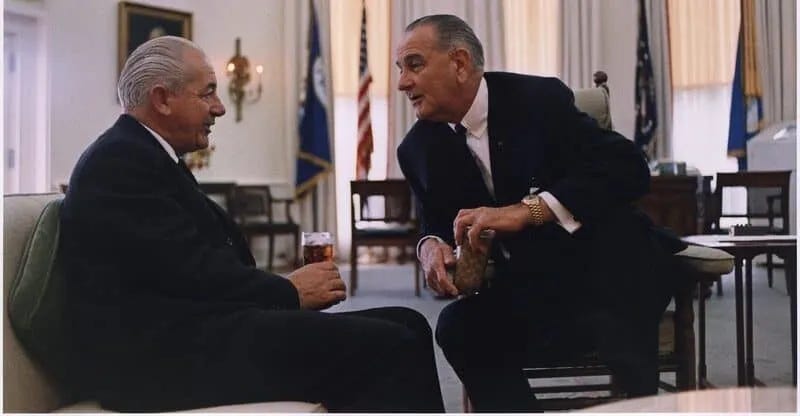
— All the Way with LBJ (Power is where Power Goes)
If the preceding has inspired a measure of cognitive dissonance for some, then what follows is unlikely to temper it. But to chronicle it for historical posterity alone is a necessary undertaking if not a patriotic duty; folks can then decide for themselves if such a hypothesis is worthy of merit. Let’s go shopping shall we?
Put simply, highly respected US author Phillip Nelson (now sadly deceased), posits a very plausible explanation of what might have really happened to our PM.
Per the title of his essay, “The Mysterious Death of Australian Prime Minister Harold Holt (And Why LBJ Must be Considered a Prime Suspect”), the author provides a very compelling case for the prosecution. That in fact, the then sitting POTUS Lyndon B Johnson (aka LBJ; JFK’s successor), may have directly nodded the removal of Holt because he was going all wobbly on our continued support for US involvement in Vietnam. (See here, here, here for the article in three parts.)
To be sure, regime change rarely gets more serious than when the US takes out the leader of another country, and this is particularly the case when it’s the leader of a a long-standing ally or a friendly nation. Again I concede most of my compatriots would view any hint that Holt met with foul play much less was offed by our chief ally, qualifies as an “outlandish” conspiracy theory, and myself as a loony-toon practitioner thereof with too much time on his hands. Be that as it may, I ask readers to bear with me.
In his attempt to shed new light on Holt’s Houdini-like vanishing act, Nelson offered up the following as an appetiser:
🗣👉 ‘The fact that his body was never recovered added to the enigma, considering [the belief of local officials] that a body would naturally wash up to shore due to the strong surf. Those who knew him pointed to the unlikelihood of him…becoming a victim of that surf:…Holt had swam, snorkelled, skin-dived and fished there for 40 years; he’d told others that he knew those waters “like the back of my hand,” and knew when conditions were too dangerous...’ [Emphasis added].
Though Nelson conceded he could not definitively prove his thesis (and that indeed we may never know for sure), for him Holt’s fate has all the hallmarks of foul play; that it was not “misadventure” as the history books, public opinion and the official record would have us all believe. To this end Nelson sums up his findings, with those aforesaid “clarifications”:
‘Throughout my books and blogs, I try to make clear when I am citing what I consider credible research by others, or my own factually-based findings, versus the relatively few situations in which I make speculative assertions. In this case, there are very few substantive points that could be classified in the last speculative category. Thus the case against Lyndon Baines Johnson in the assassination of Harold Holt must be considered exceptionally strong.’ [Emphasis added.]
It must be stressed here that Nelson is no “loony-toon conspiracy theorist”, not by a long shot from the Texas Schoolbook Depository Bldg. To underscore this assertion, he has a reputation as a meticulous researcher with the track record of being an accomplished author, published by highly respectable imprints.

Full disclosure: I enjoyed a warm friendship with Phil Nelson, having worked closely with the man on two of his published books, and we ‘chinwagged’ on many a Zoom call. I’ve also interviewed him on my TNT Radio show “The No Fly Zone” in 2022. In this discussion he insisted he did not have “an axe to grind” with LBJ per se; he was simply seeking a more accurate, historically faithful portrait of one of the most consequential and controversial of modern American leaders. Not only do I believe him, but feel he succeeded admirably.
In sum, Nelson’s insight into America’s 36th president is in my book second to none, with a visit to his website evidencing this; not for nothing does he ‘baptise’ LBJ “The Master of Deceit”. LBJ though was much, much more than a “master of deceit”; a master to be sure, but both jack and master of plying the dark arts of the Machiavellian trade. Per Nelson, with Holt’s support for our ongoing involvement in Vietnam wavering, LBJ not only had motive.
In the CIA, the president also had the means, with spy agencies having their bespoke methods of whacking those who’ve become surplus to requirements, complete with how-to instruction manuals (see here and here). LBJ also it must be stressed, ‘had form’, such that if it served his purposes, [he] would not hesitate making such a call for a moment. (Perhaps only the Clintons might rival LBJ by leaving a longer trail of dead in their political wake.)
Herein Nelson is further careful to emphasise the following. Without the nod from the “Oval”, even the CIA would give pause before interfering directly even if covertly in the affairs of an important ally, much less for that matter act unilaterally in removing the leader of that same ally from office. (It’s notable that after Holt’s disappearance, there was no further ‘wobbling’ on our commitment in Vietnam, at least not upon the part of Holt’s successors. For the then opposition Labor Party and the Aussie public, it was though another matter entirely.)
Nelson’s epic two volume work on the life and times of LBJ (see here and here) chronicles with impeccable references and citations the countless high crimes and treacheries of LBJ the man and the psychopathic nature of his personality. Indeed, Number 36 was to all intents his generation’s poster boy for political psychopathy. Nothing was “off the table” for Johnson, except perhaps for any consideration as to whether he might be caught out in the commission thereof. Which as history tells us, this never happened, itself another pointer for many to the man’s impressive criminal audacity, his ‘evil genius’ as it were.
Per Nelson again, LBJ’s “form” embraced everything from his own hand (to be sure in cahoots with the CIA, Mossad and other players), in the 1963 murder of his predecessor (JFK) and the subsequent cover up; the assassination of Martin Luther King in 1968 and subsequent cover up; and his actions leading up to, during, and beyond, the unprovoked attack on—and attempted sinking of—the USS Liberty by the Israeli Defence Forces during the Six Day War in 1967. (See here and here for my own detailed exposition of this story.)
To say LBJ then was ‘a piece of work’ doesn't even begin to cover it; though he has ample competition, he most certainly qualifies as one of the most corrupt, deranged, criminally inclined folks ever to park his ample arse behind the Oval Desk. Without a shadow, his tenure was to be sure one of the most consequential in the modern history of the Republic, and his legacy one which for any number of reasons, remains with us all today. (See here for a deeper deliberation on the unique psychopathology of power manifested by LBJ and his ilk.)
As a coda to the preceding, I’ve spared readers a blow-by-blow of Mr Nelson’s “conspiracy theory” regarding the fate of Harold Holt; that would be spoiling the surprise. For those interested the best thing is to read what he has to say. But either way, as we’re about to see, if the removal of Harold Holt in 1967 did in fact occur under the circumstances as hinted above, it was not to be the last time the Empire du jour sought—and succeeded in—the removal of our duly elected PM from office.
AUTHOR NOTE: Although a story for another time, the most “consequential” aspects of his legacy was perhaps LBJ’s eager embrace of then bourgeoning Jewish Lobby and his unerring support for Israel. This embrace has directly led today to the Lobby being by far the most powerful, influential—and corrupting—of special interest groups ever to ‘infest’ the Swamp that is Washington DC. Readers wishing to do so can see the fruits of my investigative labours in the link below. 👀🔗👇
— There’s Movement at the Station (Down Under)
When it comes to Australia, beyond being the first country ever to win the America’s Cup (1983), to the extent that less worldly Americans might muse on such, amongst the first things likely to come to mind are convicts, kangaroos, cockatoos, kookaburras, crocodiles and koala bears. For those who do so “muse”, few I’d aver might be aware of the significant role we play in supporting America’s full spectrum dominance ambition, or much of the history of this alliance.
Over and above simply broadening the historical and political horizons of American readers (and perhaps to boot even a few of my fellow Aussies), I trust what follows will provide all a deeper understanding of how our respective pasts have intertwined. And for my compatriots, why given current geopolitical events and developments such an appreciation is critical to our future security, and (at least to the extent we still retain either), the maintenance of our sovereign integrity and preservation of our independence.
In so many cases this shared history has been to our detriment. Most notably, it was our regrettable involvement first in Korea and as already mentioned, around 15 years later in Vietnam, the latter commitment to which as already mentioned Harold Holt himself gave the nod. Further commitments in varying degrees in Afghanistan, Iraq (twice), Syria, Libya, and Yemen of course are more recent examples. This is without noting our varied, ongoing, and largely unquestioning support—direct and indirect—for US foreign policy vis a vis Ukraine, Israel, China, and Russia. Such is the nature of this relationship, we’ve not seldom been referred to as America’s 51st state, playing as it were “Tonto” to the US’s “Lone Ranger”.
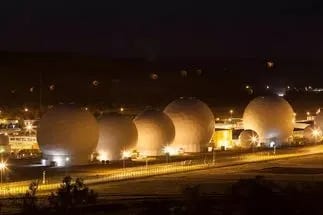
However, our slavish commitment to the so-called ‘international rules-based order’ much favoured by the Beltway Bedlamites™️ is now being questioned more than than ever. In other words, as my fellow Aussies might say, there’s ‘movement at the station’! And as we may all be about to find out, we ignore such “movement” at our peril. Which is to say, the reality, indeed the irony, is such that our alliance with the U.S. does much more to undermine Australia’s security, increasingly so.
With this in mind, we should consider further the present and future implications of this alliance, along with again some of the history that’s brought us to this point. In a recent piece tellingly titled “Exiting Pax Americana could save our bacon”, geopolitical analyst Eugene Doyle paints a very sobering picture for the future of Australia (and his own turf New Zealand) should we continue to align ourselves with “Team America” as he puts it.
After noting that we’ve ‘little idea’ about the momentous changes headed our way, in setting out his stall, he had this to say: ‘[we’re] going to have a very difficult time in the Asian century if we do not adjust our headsets’. Said Doyle:
‘Australia has benefitted enormously from the 200 years of Western domination of world history. The West will remain strong but will no longer be the single dominant civilisation. So Australia…has got to accept that it is in a multi-civilisational world. [We] will have to adjust and adapt to Chinese power and live with that reality. It means a psychological adjustment first before you carry out your other adjustments.’ [My emphasis.]
From this point, let’s once again mosey on down into the Memory Hole™️? In keeping with the theme of this series, such “detriment” as cited earlier includes a momentous and consequential CIA-inspired gambit in 1975 that climaxed in the ousting of our then duly elected prime minister. In short, a coup d’état, as noted in the previous episode, the wrecking ball in Washington’s foreign policy toolbox, the resort to which being a recurring theme in the playbook then and since.
As with the Iranian coup of 1953 (for a future episode), ably backed up on this occasion by the British in the form of MI6, the CIA had their not always plausibly deniable ‘prints all over the 1975 Constitutional Crisis that triggered the dismissal—the firing in effect—by the then Governor-General Sir John Kerr, of Aussie PM Gough Whitlam and his entire government.
In his 2023 article, “Cold War Imperatives: Gough Whitlam and the US National Security Council”, Jon Stanford helps to pave the way forward here:
🗣👉 ‘In 1974, the US National Security Council…took jurisdictional responsibility from the State Department for America’s relationship with Australia. This was unprecedented. Why take that step? It implies that the Administration intended to intervene in the political affairs of a close ally at the highest level, almost certainly with the aim of destabilising its government to the extent it would lose office.’ [Emphasis added.]
(See here for a comprehensive five part account of this turbulent period in our political history. For both history buffs and curious readers in general, it’s a trip!)
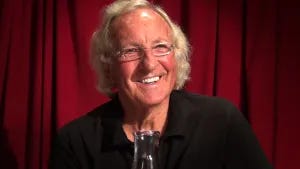
— Our Fatal Attraction
As it turns out, the history of the CIA’s clandestine interference in Australian politics is one that is well documented. But like so many of these things often are, it’s a history far from familiar to most Australians, let alone Americans. Insofar as the dismissal of Whitlam went, this was likely one of these situations where the indelible Henry Kissinger maxim prevailed:
‘…I don’t see why we need to stand by and watch a country go communist due to the irresponsibility of its people. The issues are much too important for the [Ed. Note: insert name of offending country cum regime change target here] voters to be left to decide for themselves.’ [Emphasis added.]
Now few would argue that Australia was experiencing a “serious electoral contest” at the time of this crisis. And though perhaps not recognised by most Aussies at the time or since (nor was it of quite the type presented by the media), it was one that surely qualified as “critical” to U.S. “geopolitical interests”.
In succumbing to its meddling impulses however, whether America was justified in the covert actions it took is an entirely different matter. As is the suggestion that in whatever Whitlam might’ve or might not have been doing to incur Washington’s displeasure, it was because he was ‘going communist’. On both counts, the track record in so many other countries would lead many to suggest it wasn’t so “justified”.
As our own renowned journalist and filmmaker John Pilger (now deceased) noted in a 2014 piece eulogising the death of Whitlam at age 94, the Governor-General John Kerr was not just the “Queen’s man” in Australia; prior to being appointed as Australia’s head of state, he had “long standing ties” to both Britain’s MI6 and the CIA. ‘Quelle surprise!’…we might say.
Again, some backstory. Whitlam assumed power in 1972 amid Obama-like euphoria after twenty-three years of conservative rule by a coalition of the Liberal and then Country (now National) parties. That cohort embraced a political mindset increasingly viewed by many Aussies as too subservient to Washington, this being of course a frequent refrain in the regime renovation narrative.
For his part Whitlam felt that a foreign power shouldn’t control our resources or dictate our economic and/or foreign policies, and he tapped into the prevailing mood of the time, one shaped in no small measure by our highly contentious involvement in the Vietnam War in particular, and to be sure, the more widespread anti-American sentiment that infused the Zeitgeist. This disastrous military commitment in ‘Nam on our part proved to be a key factor in Whitlam’s subsequent landslide win. Thus began the first and so far only separation between our country and the US since we originally ‘tied the knot’ in this always lopsided ‘marriage of convenience’.
Interestingly, Whitlam visited China the year prior to his election in his capacity as Labor opposition leader, the eventual aim to both recognize that country and open up diplomatic relations once in office. That said, he was scarcely a card-carrying ‘Commo”. Yet for a variety of reasons the freshly minted PM was treated at first by many in the US with no small measure of suspicion, and later, by contempt, animosity, even paranoia. This extended to the then palace intriguer nonpareil and resident regime renovator Henry Kissinger*, along with his boss POTUS Richard Milhous Nixon, as some would have it, a man with “suspicion”, “contempt”, “animosity” and “paranoia” to spare. [*See here for a compilation of Hank’s “Greatest Hits, Vol. One” 😉.]
Author Note: Ironically, Nixon himself would fall victim to coup of sorts the year before Whitlam was dismissed in what was called the Watergate Scandal. That the former did so largely because of that “spare” suspicion, contempt, animosity and paranoia was even more profoundly ironic, but perhaps not in the way most folks might think. A story for another time. Suffice to say, it’s a doozy.
In seeking an entente of sorts with China, the “political visionary” Whitlam wasn’t just ahead of his time; he was way ahead of Kissinger and Nixon in playing the Great Game as it was beginning to unfold then in Asia. As history tells it, less than twelve months later both Hank and “Tricky” were making a beeline to Beijing to do same, the media breathlessly announcing Nixon’s impending trip during Whitlam’s China visit.
SIDEBAR: To the best of this writer’s knowledge, there’s no record of either Nixon or Kissinger publicly acknowledging Whitlam’s history-making diplomatic meisterstroke in seeking a rapprochement with the world’s most populous communist nation. It seems reasonable to suggest that these consummate practitioners of détente diplomacy and much-lauded masters of realpolitik would’ve been less than impressed that a political ‘wannabe’ from Down Under (of all places)—not even then in high office and yet himself touted as a political visionary for his initiative—had shown each of them a clean pair of heels on both counts!
In any event, as already hinted, both men were deeply suspicious of Whitlam’s broad agenda; Kissinger harboured ‘very strong negative feelings’ towards him, coming to see him as a fly in the imperial ointment, with Whitlam perhaps wearing that ‘with a badge’. It needs be said though that, given the views expressed above by Kissinger himself regarding countries who might “go communist”—when in fact both men did indeed “go communist” in officially recognising China, and his undoubted role in pushing for Whitlam’s ouster later in his second term along with the primary rationale for the coup—there’s enough irony to go around herein for all but the most politically obtuse or historically illiterate. — GM
Described by Pilger as a ‘maverick social democrat of principle, pride and propriety’, amongst other things Whitlam vowed to pull the pin on the Vietnam debacle, provide universal health care, abolish university fees, and tellingly, proposed to “buy back the farm”, a term which would’ve come loaded with all manner of hidden import for many from Wall Street to Washington. Given that more than a few observers have in the past employed a similar metaphorical framework in describing Australia’s ‘bromance’ with the U.S., as already hinted it’s not at all frivolous to suggest that this was akin to “Tonto” telling the “Lone Ranger” he was moving on and that once the silver bullets ran out and the ‘Native Americans’ began closing in on them, ‘Kemo Sabe’ was gonna be on his ‘Pat Malone’. Kemo Sabe needless to say, was not impressed!
And as we’ll see throughout this series, many a coup has been inspired by such expressions of economic independence. But in the final analysis, it was another matter entirely that proved to be the main catalyst for Whitlam’s removal from office. (See here, here, and here for additional information and background.)
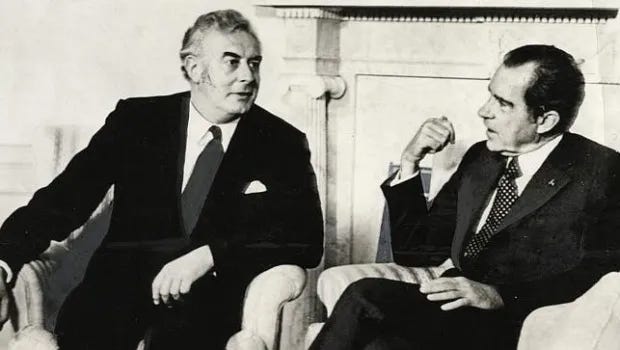
— The Deep State ‘Does’ the 51st State
For his part Gough Whitlam had more or less positioned himself as an Antipodean version of Guatemala’s Jacobo Arbenz Guzman or his contemporary Chile’s Salvador Allende, the latter nation being the one Kissinger was referring to earlier, although one should add our politically ill-fated PM got off very light compared to Allende (and per our opening, perhaps Harold Holt as well). Whitlam subscribed to basic principles of sovereignty, independence and national self-determination in the management of our own affairs, with any notion of empire or hegemony, much less any outward manifestation of it, being anathema to him.
To say Australia—then as now arguably Uncle Sam’s most ‘steadfast to a fault’ vassal state—had not experienced anything quite like it before or since is an understatement. And the reason why is simple: Our politicians, especially those from the left side of politics, to their credit (dubious as such “credit” might be for many) learned their lesson well. They have behaved themselves for the duration, with there being little sign any of Whitlam’s political heirs in the Labor Party having ever contemplated repeating history.
In what many Americans I suspect will view then as a not dissimilar state of play on their own turf, there’s little daylight between the foreign policy positions of both our major parties, the de rigueur public posturing to the contrary aside. This is especially so when it comes to Australian-U.S. relations, the basis of which is ANZUS, the formal military-intelligence-security alliance. Though space again precludes a blow-by-blow of the skulduggery that attended Whitlam’s eventual downfall, for our purposes it’s instructive to at least look at part of the backstory of this prototype colour revolution.
Suffice to say that a number of ‘household’ Deep State names either played key— or made not insignificant cameos—in the long, drawn out saga, of which it has to be said was one of the most significant events in our political history. To be sure they did so sub rosa whereby it wasn’t until sometime later the true, if still wholly incomplete, nature of their roles were revealed, an all too familiar leitmotif in the annals of CIA-inspired regime change gambits. (See Sidebar Below).**
At this point, it’s enough to understand the main catalyst for the coup. This requires additional insight into the history of the U.S.-Australian relationship itself. This, if for no other reason than most Americans (and no doubt more than a few of my compatriots) might better appreciate the importance to the U.S.—indeed, to the Anglo-American alliance overall—of this long-standing, albeit one-sided, ‘marriage’. As always with such matters, context and perspective is key. If the alliance was a “marriage”, then it was one made less in heaven than in Washington (that is unless America’s national capital might, in an as yet unimagined alternative universe, qualify as some idyllic empyrean equivalent thereof, a ‘meditation’ perhaps only its most deluded denizens might attempt, which we can safely assume these days is no different).
As a member of the Five Eyes alliance, Australia for this reason alone, was not then, nor now, just another tin-pot, piss-ant “Third World” backwater on the butt-end of the Big Blue-Green Ball. For one thing our location, to say nothing of our sheer size, our modern socio-economic and industrial infrastructure, our political stability, our continental island nation status and its very isolation, provided then as now the near perfect locus point from which the U.S. could project power into the Asian region via the charter explicit in its ‘full-spectrum dominance’ strategy. (As in real estate, in geopolitics we might also argue it’s all about “location, location, location!”)
These considerations are even more critical now, existentially so. This is particularly considering the ascendancy of China along with more broadly that of the East Asian, and increasingly other nations. In other words, the much ballyhooed BRICS alliance.
SIDEBAR**: This was especially applicable in relation to the Nugan-Hand Bank (NHB) scandal, an epic John le Carre meets Warren Zevon ‘Lawyers, Guns, Drugs, Mercenaries ‘n Money’-like saga chronicled in Crimes of Patriots: A True Tale of Dope, Dirty Money, and the CIA by investigative journalist Jonathan Kwitny. The NH yarn ‘premiered’ early in the Whitlam era and is ‘up there’ with the best ‘fare’ that the CIA’s “Family Jewels” dirty linen menu has on offer.
This included the dirty, murky Iran-CONTRA scandal of the Reagan era, with whom it shares—not coincidentally—more than a few of the same dramatis personae, all engaging in not dissimilar skulduggery and huggermuggery. They comprised some of the most sinister, mercenary characters ever to don trilbies and trench-coats, such as Ted Shackley, Thomas G. Clines, General John K. Singlaub, Albert Hakim, and Richard Secord, to name a few.
Though the NHB Scandal has much relevance to the themes explored herein, space limits a deeper exploration. Suffice to say a couple of things. Readers should make the effort to read Kwitny’s book (a free download is available in the link here). It’s up there with anything the aforesaid le Carre ever wrote, in the classic “truth is stranger than fiction” kinda way.
And despite the massive amount of hard evidence uncovered by a subsequent Royal Commission into the affair, the final report was “inconclusive” regarding the full extent of the bank's operations, and its close ties to not just Asian but international crime syndicates and U.S. intelligence. And quelle surprise!..No-one was prosecuted here as a result of the Commission's findings. Nor we might add, Stateside. (See here, here, here.) — GM
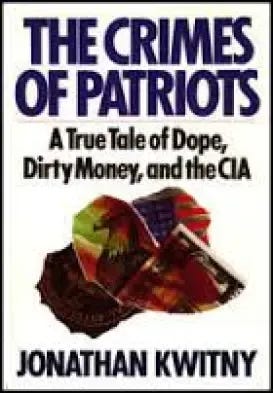
— High Dudgeon in Low Latitudes
It might surprise most Americans (and again, no doubt a few Aussies as well), that one of the most vital components of the U.S. communications network is located at Pine Gap in the middle of the continent. This state-of-the-art facility forms the centrepiece of our “Five Eyes” infrastructure, and has done so going back well before Whitlam’s heyday, even being crucial to NASA’s Apollo space program.
But Pine Gap was never just about getting a man on the moon and back: Of even greater relevance for our purposes, the facility serves as the linchpin satellite reconnaissance station for spying and surveillance of friend and foe alike. Its key task throughout the Cold War was keeping a keen eye on the Soviets, essentially monitoring how diligently the then ‘gremlins in the Kremlin’ were playing ball with arms control treaties and nuclear testing agreements. The facility remains to this day an integral part of the central nervous system of the imperial panopticon.
For this reason alone, it’s worth expounding a little more on its current raison d’etre. In 2017, the 50th anniversary of Pine Gap, along with affirming it as the most vital communications facility outside [the U.S.], performing a key role in the collection of a wide range of ‘signals-intelligence’, Richard Tanter of The Nautilus Institute of Security and Sustainability (NISS) noted that it functions in,
‘…providing early warning ballistic missile launches; targeting of nuclear weapons; providing battlefield intelligence data for U.S. armed forces; and elsewhere, critically supporting missile defence, supporting arms control verification, and contributing targeting data to drone attacks.’
In responding to this report at the time, Aussie based geopolitical analyst Binoy Kampmark highlighted no small measure of controversy and criticism such a milestone inevitably invited by drily noting the following,
‘…all this cut, dried and smoked material [in the NISS Report] conveys the relevance of Australia’s continued geographical role as a dry goods merchant for Washington. It supplies the isolation and the means for the U.S. imperium, as officials in Canberra keep mum about the sheer extent [to which] Pine Gap operates. It also supplies the bloodied hand that assists U.S.-directed drone strikes in theatres where neither Washington nor Canberra are officially at war…Australia remains America’s glorified manservant.’ [Emphasis added.]
That was seven years ago. Nothing has changed since that time.
As Pilger again noted, from the off Whitlam didn’t exactly go out of his way to endear himself to Washington or the wider Western security establishment. Soon after his election triumph in 1972, he ordered that his staff not to be “vetted or harassed” by the Australian Security & Intelligence Organisation (ASIO)—then, as now, a wholly owned franchise of “The Company” (aka CIA).
Moreover, when his ministers publicly condemned the U.S. bombing of North Vietnam, according to Pilger, an unnamed CIA station officer in Saigon said: ‘We were told the Australians might as well be seen as North Vietnamese collaborators.’ Such then, as now, was/is the default response of Washington to any unwelcome ‘static’ coming from their vassal states wherever they might be located.
Whitlam stretched Washington’s friendship further by demanding at one point to know if the CIA was running a spy base at Pine Gap. Notwithstanding its official, somewhat anodyne function as described by NISS, Pine Gap was in reality a giant vacuum cleaner, one which, as Edward Snowden later revealed, allows the U.S. to spy on everyone everywhere. ‘Try to screw us or bounce us’, Whitlam warned the then US ambassador Marshall Green, ‘[and Pine Gap] will become a matter of contention’.
As for Whitlam’s implied threats regarding Pine Gap, to say such utterances ruffled a few feathers in Washington is again an understatement, and it’s safe to say [that] from that day onwards, the PM’s political career—and Australia’s short-lived ‘independence’—entered its fateful southward trajectory. According to Pilger, in an interview with Victor Marchetti, the legendary CIA officer who later wandered off the reservation by writing a ‘kill ‘n tell’ expose on The Company and who was actually involved in setting up the Pine Gap facility, the ex-spook told Pilger personally that, ‘This threat [to close Pine Gap] caused apoplexy in the White House…[after which] a kind of Chilean [coup] was set in motion.’
— The Falcon and the Snowman
This narrative would not be complete without noting that the highly classified intelligence that Pine Gap gathered around the time of the Whitlam dismissal was deciphered and later revealed publicly by Christopher Boyce, who worked for a company called TRW, at the time a CIA contractor. Boyce was ‘troubled’ by the ‘deception and betrayal of an ally’ and this was apparently what motivated him to do what he did.
This spy yarn was later turned into a film The Falcon and the Snowman (from the book of the same name). Amongst other revelations Boyce disclosed that was the CIA had infiltrated Australia’s political and trade union elite and they actually referred to the Governor-General of Australia, Sir John Kerr, as “our man Kerr”.
AUTHOR NOTE: The irony here should not be lost on anyone: Meaning? As is the case today, the trade unions themselves were/are the foundation of the Labor Party’s political power base. The first Labor PM who succeeded Whitlam in 1983 was Bob Hawke, a former national trade union chief who kowtowed to Uncle Sam with the best of them. Our current Labor PM Anthony Albanese is no different; he’s a refugee from the union movement, and like so many never having held a real job in his life.
For his part Boyce, who later did 25 years in the Big House for selling secrets to the Soviets, in a wide-ranging 2014 SBS Australia interview, again confirmed his belief that the CIA was behind Kerr’s decision to oust Whitlam. This action was facilitated by using a little known Constitutional provision enabling the head of state (Kerr) to revoke the PM’s commission, and appoint a caretaker government. In CIA circles at the time Boyce added, ‘you couldn’t say Whitlam’s name without the spooks…looking nauseated. He was viewed as a threat to the [Pine Gap] project…’
On the day of Whitlam’s dismissal he recalled the reaction of the CIA folks whom he liaised with:
‘[There] was a party, it was jubilation. The wicked witch was dead, you know. He was gone, nothing more to worry about. And it was just a sense of relief because they really did think he was going to close [Pine Gap] down. He was going to turn off our eyes, and they were worried, you know.’
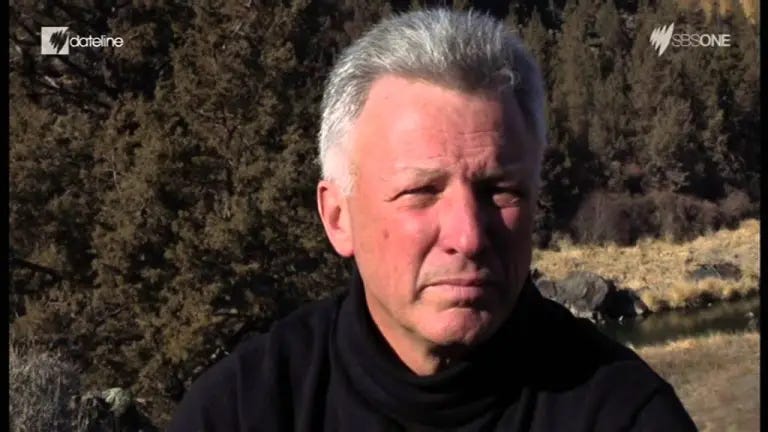
Again, additional history of our country demands our attention; in particular how we morphed from being at the beck and call of the British Empire to playing a similar role vis a vis the U.S. imperium. The man who again provides us a most illuminating insight into the events of 1975 is our very own John Pilger. In seeking to break free from the confines of U.S. power, Whitlam was up against as much opposition domestically as he inevitably came up against Stateside. This is not an uncommon scenario in such instances where a new ruling party in a nation seeking more autonomy and decides unwisely to test Washington’s forbearance.
And although his removal from office in such an unprecedented, unceremonious manner doubtless never figured into his trail-blazing political calculus, in Pilger’s summation, Whitlam had few illusions about what might lie ahead of him, in either the domestic or foreign policy front. Post-World War II, having to some extent by then weaned ourselves off the attachments to Britain that attended our former colonial status, the legacy of which remained intact despite the country becoming an independent Federation in 1901, Australia’s political establishment was nonetheless wedded to the notion of dependence on a Great Power alliance for its national security. Or at least we thought we needed to be.
— Going Forward Down Under (With or Without the Empire)
In reaching something of a denouement in our narrative here, the following hopefully will do the trick as it were. In 2016, a former Labor PM Paul Keating (1991-1996) threw his hat into the ring questioning the Australia-US alliance. He said it was time to ‘cut the tag’, and that ‘focusing less on the alliance between the two countries and concentrating more on relationships within Asia’ was the way forward. Keating added,
‘We’ve got to this almost sort of crazy position now where the American alliance, instead of simply being a treaty where the U.S. is obliged to consult with us in the event of adverse strategic circumstances, it’s taken on a reverential, sacramental quality. I’m not talking about the [present Liberal] Government, I’m talking about people on the Labor [opposition] side as well.’
And if that might not have been enough to unsettle the Beltway Bedlamites, in 2014, another of our former prime ministers Malcolm Fraser (1975-1983), gave an equally eyebrow raising interview. Fraser was at the time promoting his book Dangerous Ally, the “ally” in this case being the Empire du jour the U.S.
Here then was a former Liberal (read: “conservative”) PM no less of America’s most faithful geopolitical sidekick not simply emerging from the political closet and declaring our ANZUS alliance with the U.S. in need of a major strategic review—such opinions being anathema in political circles on both sides of the divide no matter how cautiously one advances them—but proclaiming it “dangerous” to adhere to this treaty.
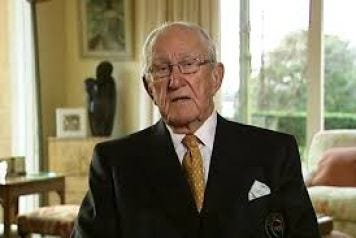
In referencing our history of “strategic dependence”—firstly on Britain, then on the U.S. after WWII—he recommended a more independent stance, free of the diktats of Washington’s war-meisters. Fraser went even further than Keating by noting that not only is conflict between China and Japan ‘possible’, but that the U.S. have ‘made it plain that they would side with Japan’ if there is such a conflict. As things stand he said,
‘[We’d] get dragged in to that conflict, when our interest would be to stay well clear of it. Now, if you’ve got those troops in Darwin being used in relation to such a conflict, and Pine Gap was being used to give direction to a variety of weapons systems, the prime minister could [not] get up and say “Oh, look, we’re not involved, we’re not complicit”. [But] we would be complicit [and] the world would know [we were]. And that means that [the US] has the power to take us to war [just] as Britain a hundred years ago had the power to take Australia to war because we were part of the Empire.’ [Emphasis added.]
What made such declarations both fascinating and anomalous at the same time was because it was Malcolm Fraser—the man succeeding Whitlam after his unceremonious ouster—who was the principal political agitator for Whitlam’s demise as chronicled earlier, and a man who thereafter became reviled by the left and more liberal/progressive elements for his efforts in creating the Constitutional crisis.
That aside, fast forward ten years later, and it’s clear that no-one in political, policy or media circles took one scrap of notice of what Fraser said in respect of our fatal attraction to the Empire du jour.
Author Note: There is no evidence of which I’m aware that Fraser knew of any CIA involvement in initiating the 1975 constitutional Crisis, either before, during, or after. For his part, and for reasons best known to himself, Whitlam always publicly played the CIA factor down. One wonders as to what they might’ve talked about privately though, as they became firm friends later in life in their years of political dotage. Oh to have been a fly on that wall.
Fraser was also a Defence Minister for a period at the height of Australia’s involvement in the Vietnam War, a military commitment on our part entered into by his own party, as noted then under the prime ministership of Harold Holt), and one he later came to regret. For this writer, the fact that these men later became friends remains one of the most glaringly ironic and unpredictable developments in our own (and possibly anyone’s) political history.
And for Fraser to come out albeit many years later to declare that Australia should seek more independence from the U.S.—the very stance upon Whitlam’s part which upset Washington so much at the time and which contributed so emphatically to his political demise—is the stuff you simply couldn’t make up!
Few politicians of which I’m aware have undergone such an extraordinary Damascene conversion on so many policy levels, and left so many folks including some of our sharpest political analysts and commentators scratching their heads, many as much in bewilderment and in wonderment, with unsurprisingly, more than a few less than impressed.
All up then, it has to be said then that much of this soul-searching about our relationship with Uncle Sam herein and elsewhere can be attributed to the feelings generated by America’s ill-fated and ill-judged response to the attacks of 9/11; in particular the invasion of Iraq and Afghanistan and the consequential blowback from such disastrous decisions, and from the so-called War on Terror in general that has been raging seemingly without end since 2001.
Like all countries, Australia has not been immune to the immense economic and strategic transformations that have taken place as a result of America’s relentless and ruthless campaign to achieve full spectrum dominance in all spheres of the geopolitical arena—one triggered by 9/11 and on which said “campaign” continues to be justified, without any serious protest thus far from its Western partners and allies—whilst countering, even aggressively pre-empting, with every resource at its disposal any real or imagined challenge from other upstart power players. Until and unless the Bedlamites who still seem to be running the Beltway shit-show begin to appreciate how disastrously their provocations and actions are impacting on global peace, security, and stability (Ukraine anyone?), we are unlikely to see any change.
The argument here in Australia for those who unequivocally support this alliance will be that this is not a good time to be second guessing it, given the increasingly precarious situation in global affairs. (One is reminded of what the philosopher and atheist Voltaire was supposed to have said when asked on his death-bed if he would renounce the devil: ‘This is not the time to be making new enemies!’)
These same folks though confuse cause and effect, and it is a specious argument. The reality is that in the pursuit of full spectrum dominance, that “peace, security, and stability” has been consistently and deliberately undermined by the U.S. ever since the fall of the Soviet Union, a project that went into hyperdrive after 9/11, with no sign of it slowing down anytime soon. The irony here is as inescapable as it is profound. We could well end up embroiled in a cataclysmic confrontation not of our own making—yet as Fraser observed rightly, one in which we’ve allowed ourselves to become “complicit”—not unlike that of the one in 1914 with the ancien regime of ‘perfidious Albion’.
All up, our continued alliance with the Empire du jour under the present arrangement is a zero-sum game for us. Those countries with similar alliances and attachments—whether in Asia or Europe—would also do well to be similarly concerned.
Greg Maybury, September 15, 2024.





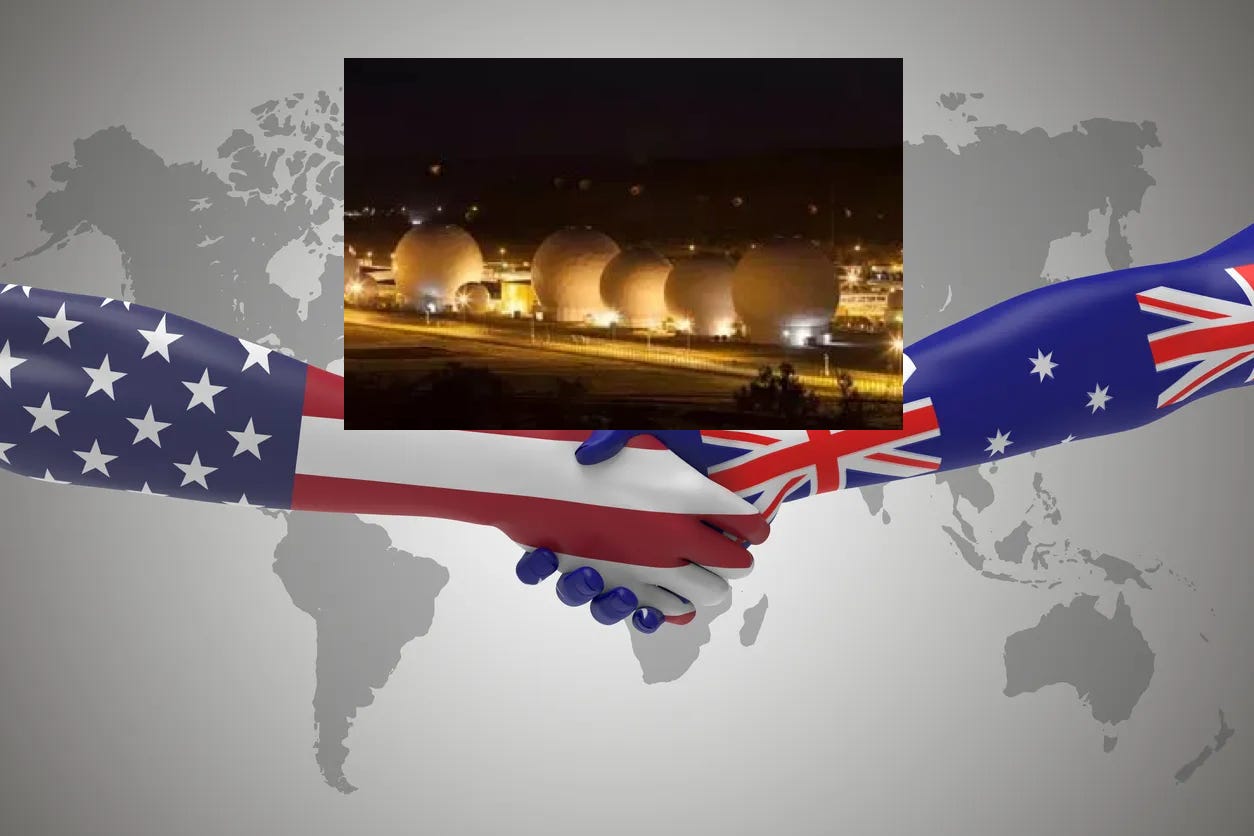




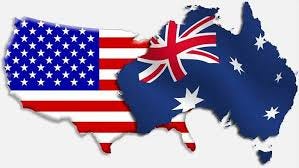

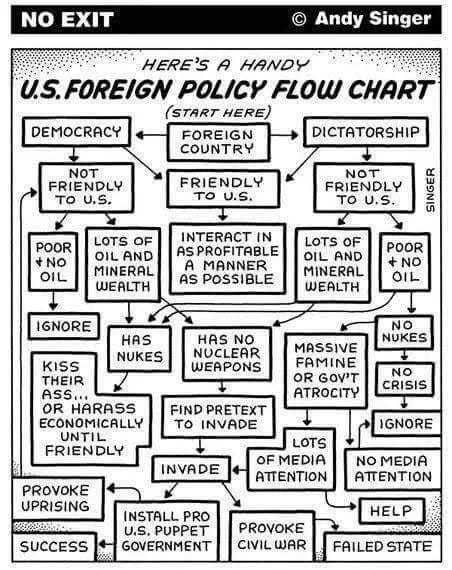


All three quotes are spot on! The evil of the Anglo-American empire knows no bounds